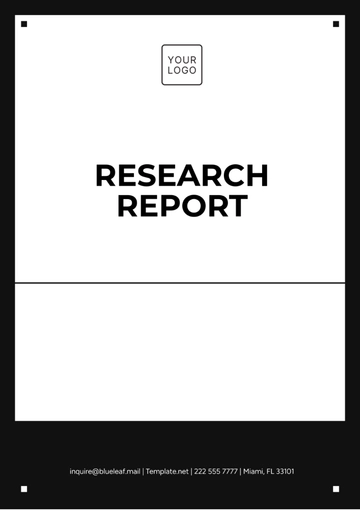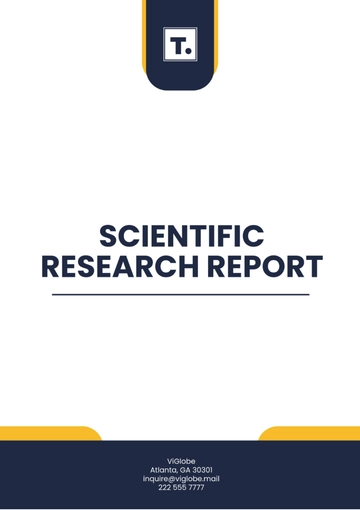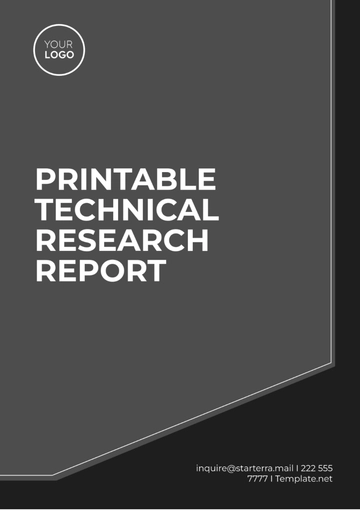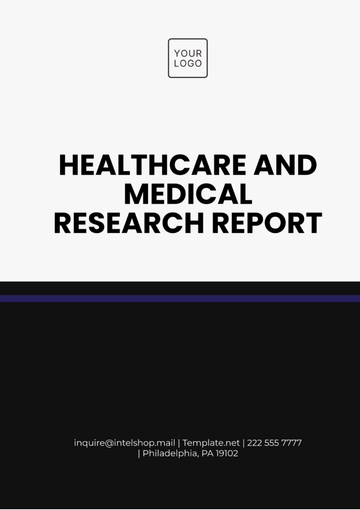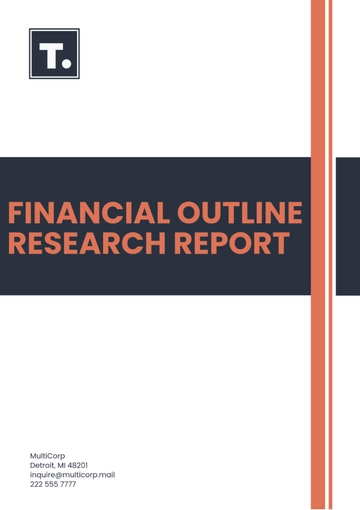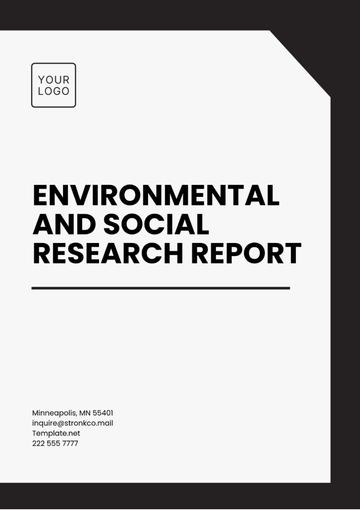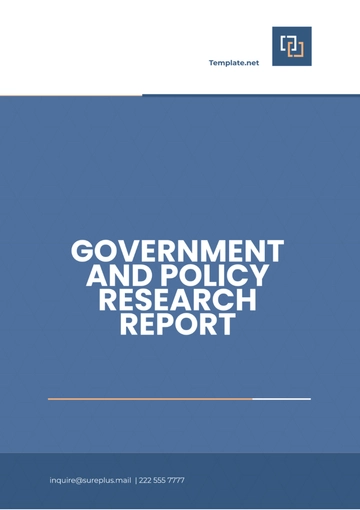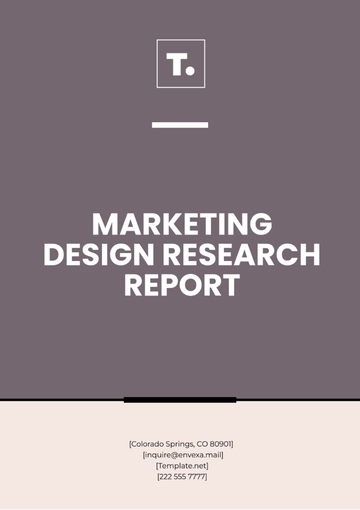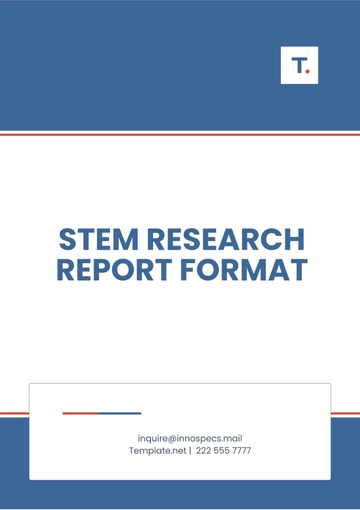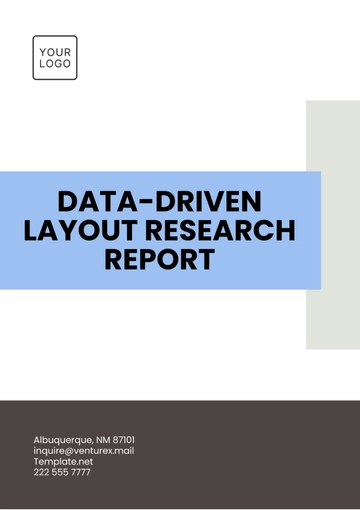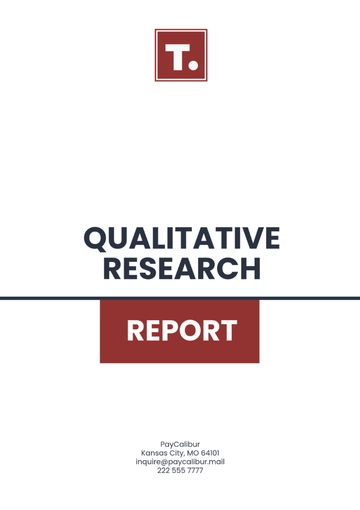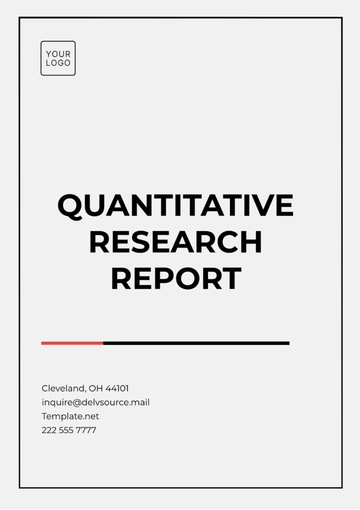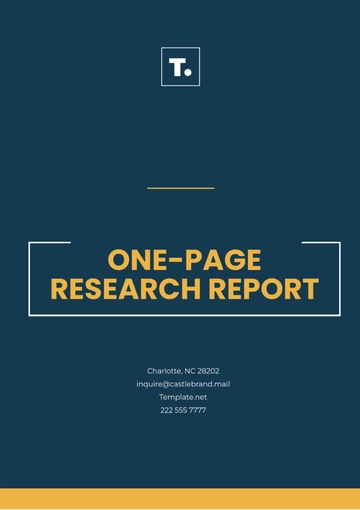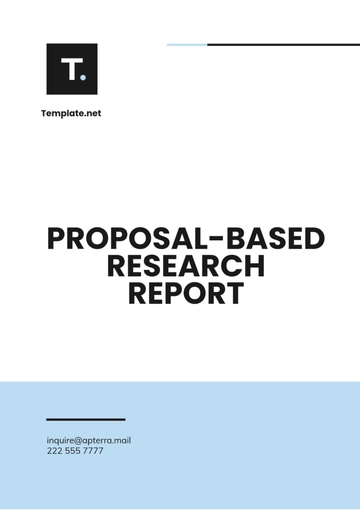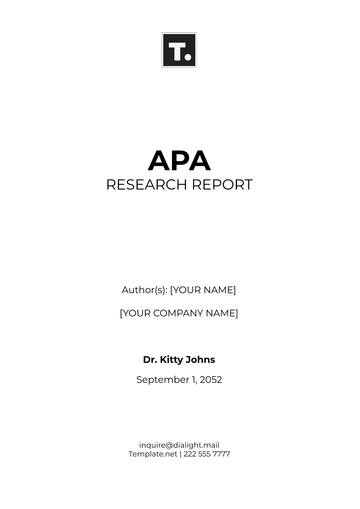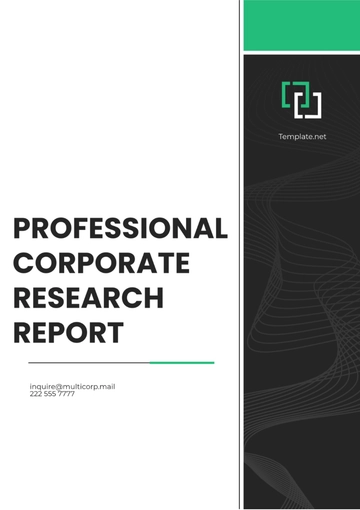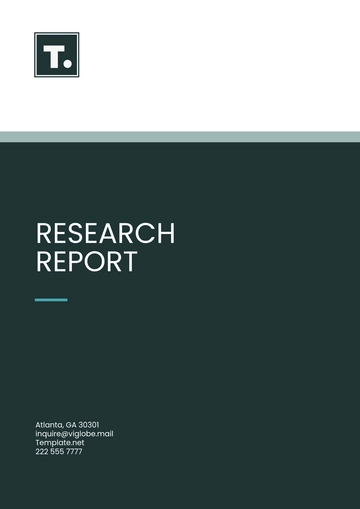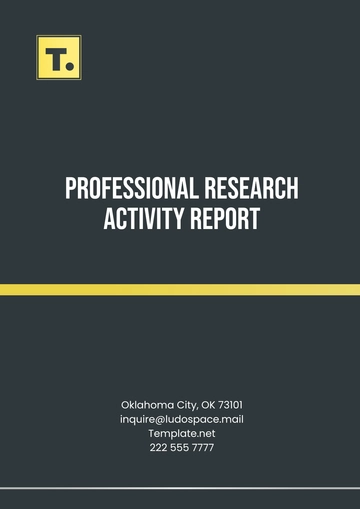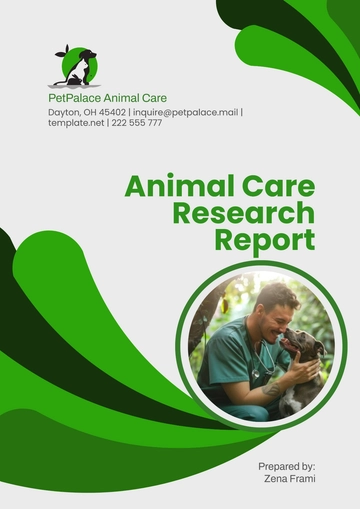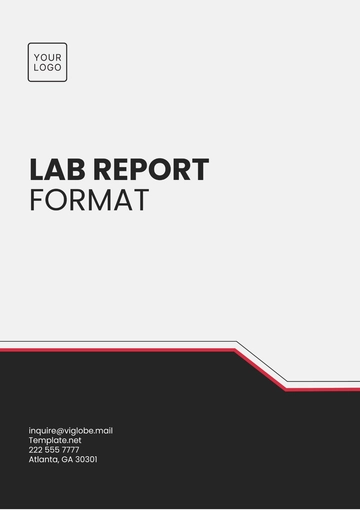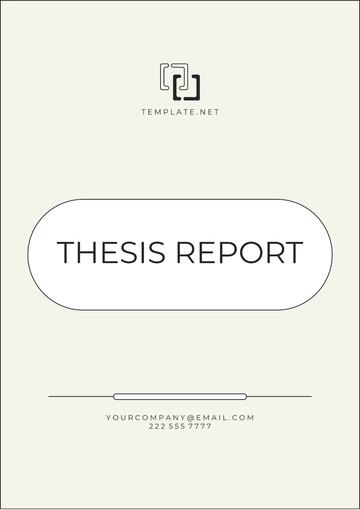Free Hazard Research Report

I. Introduction
Background Information: The report commences with an examination of the critical role hazard management plays in ensuring [Your Company Name]’s workplace safety, particularly in sectors prone to high-risk incidents. It underscores the necessity for ongoing research due to the dynamic nature of workplace hazards and the evolution of industry practices. |
Research Objectives: This study is designed to systematically identify and analyze emerging trends in workplace hazards. It aims to critically evaluate the efficacy of existing mitigation strategies and identify potential areas for improvement of [Your Company Name], thereby contributing to more robust safety protocols in the workplace. |
II. Methodology
This section delineates the research methodology, providing clarity on the study's approach and data sourcing.
A. Research Methods
Using a mixed-methods approach, the study integrates quantitative data analysis from workplace safety records with qualitative insights gleaned from employee interviews and expert opinions. This comprehensive methodology ensures a nuanced understanding of the complexities surrounding workplace hazards.
Method Type | Method Description | Sample Stats and Insights |
Quantitative Data Analysis | Analysis of workplace safety records, including incident rates, types of reported hazards, and frequency of occurrences. | Quantitative findings: 25% increase in ergonomic hazard reports over the past year. 15% reduction in chemical incidents following new safety protocols. |
Qualitative Insights | Employee interviews and expert opinions to gain insights into hazard perception, safety culture, and effectiveness of current practices. | Qualitative feedback: Employees noted a lack of training in emerging hazards. Experts emphasized the need for proactive hazard identification. |
B. Data Sources
Data compilation encompassed an array of sources, including internal incident reports, targeted employee surveys, and detailed interviews with safety professionals. External sources, such as industry safety standards and existing scholarly research, were also scrutinized to contextualize findings within a broader industry landscape.
Type | Specific Sources | Purpose and Context | Sample Insights |
Internal Sources | Internal incident reports, employee surveys, and interviews with company safety professionals. | To gather direct, company-specific data on hazard occurrences, employee perceptions, and current safety practices. | Internal reports: 30% of incidents related to ergonomic hazards; surveys indicated the need for better hazard communication. |
External Sources | Industry safety standards, scholarly research articles, and safety benchmarking reports. | To provide a broader context for the findings, comparing with industry standards and integrating insights from academic research. | External research: Comparison with industry benchmarks revealed a higher rate of ergonomic incidents than average; scholarly articles highlighted emerging chemical hazards. |
III. Findings
This section articulates the principal findings from the research, providing an in-depth analysis.
A. Key Discoveries
The study uncovered a significant uptick in ergonomic hazards, particularly in remote work environments, and an increased prevalence of chemical hazards in specific industrial segments. These findings indicate shifting hazard profiles in contemporary work settings.
Discovery Area | Specific Findings | Impact and Implications | Statistical Data |
Ergonomic Hazards | Significant increase in reports of ergonomic hazards, especially in remote work environments. | This uptick suggests a need to re-evaluate ergonomic safety measures, particularly for remote workers. It underscores the importance of adapting workplace safety protocols to evolving work environments. | 40% increase in ergonomic-related complaints in the past year; 60% of these were from remote workers. |
Chemical Hazards | Rising prevalence of chemical hazards in certain industrial sectors. | The increased prevalence of chemical hazards highlights the necessity for enhanced chemical safety training and updated handling procedures in affected industries. | 25% rise in chemical hazard incidents in the manufacturing and processing sectors. |
B. Data Interpretation
The data interpretation underscores a transition from traditional physical hazards to risks shaped by technological advancements and environmental changes. The emergent need for adaptive and proactive hazard mitigation strategies is a prominent theme in these findings.
Interpretation Aspect | Interpretation Details | Implications for Mitigation |
Transition in Hazard Types | The data indicates a shift from predominantly physical hazards to a broader spectrum including ergonomic and chemical risks. | This shift necessitates a re-evaluation of current hazard mitigation strategies to include these emerging risks. |
Influence of Technological Advancements | Technological advancements have introduced new hazards, particularly in remote work settings and in industries with rapid technological integration. | Organizations must stay abreast of technological changes and incorporate these considerations into their hazard management practices. |
Environmental Change Impact | Environmental changes, both in workplace settings and external factors, have contributed to the emergence of new hazard types. | Adaptability and proactivity in hazard mitigation are essential to address the evolving nature of workplace risks. |
IV. Discussion
The discussion offers a critical examination of the study's implications and acknowledges its constraints.
A. Implications for Safety Practices
Evolving Safety Training Programs: The study indicates that current safety training programs may not fully address the nuances of newly identified hazards, particularly those associated with ergonomic challenges and advanced chemical risks. Therefore, it's imperative for safety training to evolve, incorporating modules that are specifically tailored to these emerging risks.
This evolution should include scenario-based learning and interactive modules that reflect real-world situations, ensuring that employees are not only aware of these hazards but are also adept at responding to them effectively.
Technology Integration: Another significant implication is the role of technology in enhancing hazard management. The adoption of digital tools for real-time hazard monitoring and reporting is vital. This includes the use of sensors and wearables for tracking environmental conditions, and software platforms that enable swift incident reporting and data analysis.
By leveraging technology, organizations can achieve a more proactive stance in hazard detection and response, leading to a marked improvement in workplace safety standards.
Cultural Shift Towards Proactive Safety: Beyond training and technology, there's a need for a cultural shift within organizations to prioritize proactive safety measures. This involves fostering an environment where safety is seen as a collective responsibility, encouraging open communication about potential risks, and continuously seeking improvements in safety practices.
B. Limitations and Considerations
Scope of Data Sources
While the study provides valuable insights, its reliance on a limited range of data sources may not fully capture the breadth of hazard dynamics across different industries. Future research should aim to include a more diverse array of data points, such as cross-industry safety records and global safety metrics, to gain a more comprehensive understanding of hazard trends.
Potential Reporting Biases
The study acknowledges the possibility of reporting biases, particularly in self-reported data from employee surveys and interviews. To mitigate this, future studies could employ more objective data collection methods and incorporate anonymous reporting tools to capture a more accurate representation of workplace hazards.
Longitudinal Study for In-Depth Analysis
Adopting a longitudinal research approach in future studies could provide deeper insights into how hazard profiles and safety practices evolve. This would enable organizations to track the long-term effectiveness of their mitigation strategies and make adjustments based on emerging trends and technological advancements.
V. Conclusion and Recommendations
This section synthesizes the research findings and proposes actionable recommendations.
A. Summary of Research
The research has effectively highlighted the transition in workplace hazard profiles, particularly emphasizing the rise of ergonomic risks in modern work settings, including remote workplaces, and the increasing prevalence of complex chemical hazards in certain industrial sectors. These findings underscore the dynamic nature of workplace risks in the current era, driven by both technological evolution and changing work environments.
A critical examination of existing safety practices revealed that while traditional physical hazard management remains robust, there is a pressing need to adapt these practices to address the newly emerged risks effectively. The study also pointed out the gap in employee awareness and preparedness for these evolving hazards, suggesting a need for more comprehensive safety training and awareness programs.
The research identified specific areas for improvement, particularly in updating hazard assessment protocols, refining safety training to include emerging risks, and integrating technology for better hazard monitoring and management. This analysis serves as a crucial guide for organizations seeking to enhance their safety standards in line with current workplace demands.
B. Recommendations for Action
Develop Specialized Training Modules
In response to the identified trends, it is paramount to develop specialized training modules that address the nuances of ergonomic and chemical hazards. These modules should be designed to cater to diverse learning styles and include practical, hands-on scenarios that employees are likely to encounter.
Invest in Advanced Hazard Detection Technologies
To bolster hazard detection and management, investment in advanced technologies such as AI-driven analytics for risk prediction, wearable safety devices, and automated incident reporting systems is recommended. These technologies can provide real-time insights and facilitate prompt responses to potential hazards.
Foster Continuous Dialogue and Feedback Loops
Establishing and maintaining open lines of communication between employees and safety managers is vital. This can be achieved through regular safety meetings, anonymous reporting channels, and feedback mechanisms that encourage employees to voice their safety concerns and suggestions. Such continuous dialogue ensures that hazard identification and mitigation strategies are responsive and inclusive of employee insights.
Prepared by:
[Your Name],
[Your Job Title]
[Your Email] | [Your Number]
© [Year] [Your Company Name]. All Rights Reserved.
- 100% Customizable, free editor
- Access 1 Million+ Templates, photo’s & graphics
- Download or share as a template
- Click and replace photos, graphics, text, backgrounds
- Resize, crop, AI write & more
- Access advanced editor
Discover the Hazard Research Report Template, exclusively from Template.net. This editable and customizable tool empowers you to delve into risk analysis effortlessly. Crafted for versatility, it's editable in our Ai Editor Tool, guaranteeing adaptability to your research needs. Simplify your hazard research process with this comprehensive solution.
You may also like
- Sales Report
- Daily Report
- Project Report
- Business Report
- Weekly Report
- Incident Report
- Annual Report
- Report Layout
- Report Design
- Progress Report
- Marketing Report
- Company Report
- Monthly Report
- Audit Report
- Status Report
- School Report
- Reports Hr
- Management Report
- Project Status Report
- Handover Report
- Health And Safety Report
- Restaurant Report
- Construction Report
- Research Report
- Evaluation Report
- Investigation Report
- Employee Report
- Advertising Report
- Weekly Status Report
- Project Management Report
- Finance Report
- Service Report
- Technical Report
- Meeting Report
- Quarterly Report
- Inspection Report
- Medical Report
- Test Report
- Summary Report
- Inventory Report
- Valuation Report
- Operations Report
- Payroll Report
- Training Report
- Job Report
- Case Report
- Performance Report
- Board Report
- Internal Audit Report
- Student Report
- Monthly Management Report
- Small Business Report
- Accident Report
- Call Center Report
- Activity Report
- IT and Software Report
- Internship Report
- Visit Report
- Product Report
- Book Report
- Property Report
- Recruitment Report
- University Report
- Event Report
- SEO Report
- Conference Report
- Narrative Report
- Nursing Home Report
- Preschool Report
- Call Report
- Customer Report
- Employee Incident Report
- Accomplishment Report
- Social Media Report
- Work From Home Report
- Security Report
- Damage Report
- Quality Report
- Internal Report
- Nurse Report
- Real Estate Report
- Hotel Report
- Equipment Report
- Credit Report
- Field Report
- Non Profit Report
- Maintenance Report
- News Report
- Survey Report
- Executive Report
- Law Firm Report
- Advertising Agency Report
- Interior Design Report
- Travel Agency Report
- Stock Report
- Salon Report
- Bug Report
- Workplace Report
- Action Report
- Investor Report
- Cleaning Services Report
- Consulting Report
- Freelancer Report
- Site Visit Report
- Trip Report
- Classroom Observation Report
- Vehicle Report
- Final Report
- Software Report
